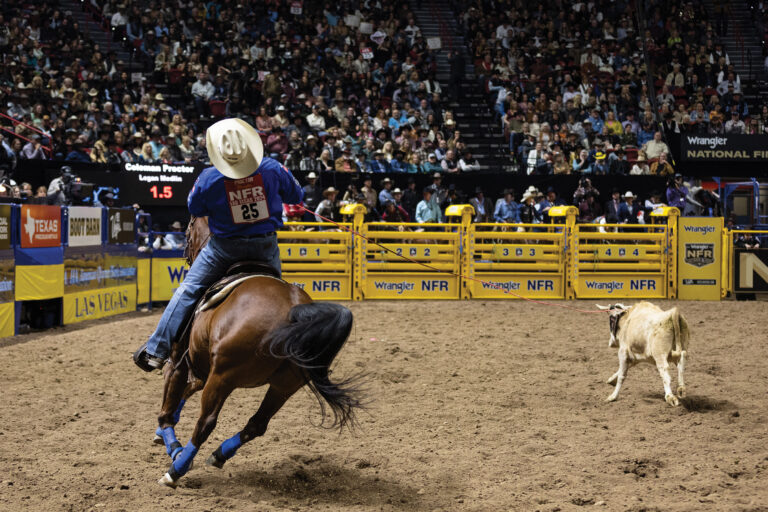Feeding with your reins?
I see a lot of the people who I help or who I see at the ropings get comfortable feeding their rope by pushing it into their loop with their coils because it helps them feed.
But I try to encourage people roping the dummy to pretend like they have the reins in their hand and they point it to the target. The goal is for everything they feed to come from their right hand. You shouldn’t be subconsciously pushing your left hand toward your loop to help feed. Why? Because you should always be giving your cues to your horse forward toward your target with your reins and your coils in the same hand—not moving toward your right hand as you feed. Moving toward your right hand will cause you to pull on the shanks of your bridle, checking your horse off or bringing him in too close behind the steer.
READ: The Importance of Good Horsemanship in Team Roping
Coil and hand position
The only time my coils are ever really turned sideways is when I’m in the box. I run my pinky through the reins and the most constant, even pull is when my hand is flat and they’re both coming out the same. As soon as I release my horse from the corner, my hand goes straight up and down, and my coils do, too. That way, when I run my hand up my horse’s neck and I’m going forward, I can shorten my rein just by how I’m holding him. But if you see me with my coils offset at all, it’s just to get a good, even pull on both shanks of my bridle in the box.
WATCH: Manage Your Coils Like a Pro
Left elbow
I don’t want my elbow out. Number one, that messes up your coils. If you ever need to throw a coil, you’ll be fighting against yourself because your coils are headed to feed off the wrong direction instead of pointed toward your target where you’re going.
Your elbow out makes you pull your inside rein a lot more. You can still move left to right subtly by working in a smaller area but, once you get your elbow out, your cues are more drastic.
You don’t want your elbow mechanical or stuck to your ribs but, when you stick your arm out, you’re putting your coils across your body, and that’s a definite no-no for me. TRJ











